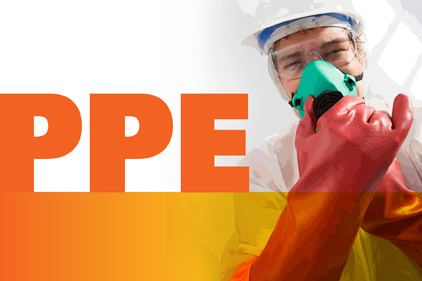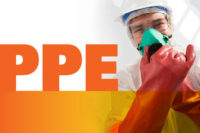Hand protection vital part of OSHA control and prevention measures to protect workers from Ebola virus

 Currently, most workers in the U.S. are unlikely to encounter Ebola virus or individuals with Ebola Hemorrhagic Fever (EHF), according to OSHA. However, exposure to the virus or someone with EHF may be more likely in certain sectors, including the healthcare, mortuary/death care, and airline servicing industries. Workers who interact with people, animals, goods, and equipment arriving in the U.S. from foreign countries with current EHF outbreaks are at the greatest risk for exposure, says OSHA.
Currently, most workers in the U.S. are unlikely to encounter Ebola virus or individuals with Ebola Hemorrhagic Fever (EHF), according to OSHA. However, exposure to the virus or someone with EHF may be more likely in certain sectors, including the healthcare, mortuary/death care, and airline servicing industries. Workers who interact with people, animals, goods, and equipment arriving in the U.S. from foreign countries with current EHF outbreaks are at the greatest risk for exposure, says OSHA.
Precautionary measures for preventing exposure to the Ebola virus depend on the type of work, potential for Ebola-virus contamination of the work environment, and what is known about other potential exposure hazards. Infection control strategies may have to be modified to include additional selections of personal protective equipment (PPE), administrative controls, and/or safe work practices. OSHA has developed interim guidance to help prevent worker exposure to Ebola virus and individuals with EHF.
Interim general guidance for workers
The following are OSHA’s requirements and recommendations for protecting workers whose work activities are conducted in an environment that is known or reasonably suspected to be contaminated with Ebola virus (e.g., due to contamination with blood or other potentially infectious material). These general guidelines are not intended to cover workers who have direct contact with individuals with EHF.
- Employers should follow recognized and generally accepted good infection control practices, and must meet applicable requirements in the Personal Protective Equipment standard (29 CFR 1910.132, general requirements) and the Respiratory Protection standard (29 CFR 1910.134).
- Use proper personal protective equipment (PPE) and good hand hygiene protocols to avoid exposure to infected blood and body fluids, contaminated objects, or other contaminated environmental surfaces.
- Wear gloves, wash hands with soap and water after removing gloves, and discard used gloves in properly labeled waste containers.
- Workers who may be splashed, sprayed, or spattered with blood or body fluids from environmental surfaces where Ebola virus contamination is possible must wear face and eye protection, such as a full-face shield or surgical masks with goggles. Aprons or other fluid-resistant protective clothing must also be worn in these situations to prevent the worker's clothes from being soiled with infectious material.
- Workers tasked with cleaning surfaces that may be contaminated with Ebola virus must be protected from exposure. Employers are responsible for ensuring that workers are protected from exposure to Ebola and that workers are not exposed to harmful levels of chemicals used for cleaning and disinfection. OSHA’s Cleaning and Decontamination of Ebola on Surfaces (PDF*) Fact Sheet provides guidance on protecting workers in non-healthcare/non-laboratory settings from exposure to Ebola and cleaning and disinfection chemicals. CDC also offers specific guidance for workers cleaning and disinfecting surfaces that have been in contact with blood or body fluids from a traveler known to have or suspected of having EHF.
- Employers must train workers about the sources of Ebola exposure and appropriate precautions. Employers must train workers required to use personal protective equipment on what equipment is necessary, when and how they must use it, and how to dispose of the equipment. In addition where workers are exposed to blood or other potentially infectious materials, employers must provide the training required by the Bloodborne Pathogens standard, including information about how to recognize tasks that may involve exposure and the methods to reduce exposure, including engineering controls, work practices, and personal protective equipment.
OSHA's "Protecting Workers during a Pandemic" (PDF*) Fact Sheet provides general guidance about principles of worker protection that may be useful during a wide-spread disease outbreak.
Looking for a reprint of this article?
From high-res PDFs to custom plaques, order your copy today!






